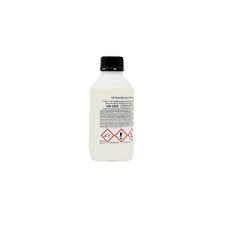different types of flocculants
Different Types of Flocculants and Their Applications
Flocculants are substances that promote the agglomeration of particles in a liquid, facilitating the removal of solids from suspensions through processes like sedimentation and filtration. They are widely used in various industries, including wastewater treatment, mining, paper manufacturing, and food processing. Understanding the different types of flocculants is crucial for selecting the appropriate one for specific applications. This article explores the main types of flocculants, their properties, and their uses.
1. Natural Flocculants
Natural flocculants are derived from plant and animal sources and are often biodegradable, making them environmentally friendly. Some common natural flocculants include
- Starch Modified starches are effective in water treatment processes. They can facilitate the settling of fine particles in industrial effluents and are particularly useful in the paper industry to improve drainage and retention.
- Chitosan Derived from chitin, a component of crustacean shells, chitosan is known for its ability to flocculate suspended solids in wastewater. It is often used in food processing for clarifying juices and wines.
- Alginates Extracted from brown algae, alginates can increase the viscosity of water and assist in the flocculation of particles. They are commonly used in the brewing and food industry.
Natural flocculants tend to be less toxic compared to synthetic alternatives and are preferred in applications where environmental sustainability is essential.
Synthetic flocculants are man-made polymers that offer enhanced performance in various applications. They can be categorized into several groups
- Anionic Polymers These negatively charged flocculants are effective in agglomerating positively charged particles. They are used primarily in wastewater treatment processes where charged particles need to be removed.
- Cationic Polymers These positively charged flocculants work effectively in situations where negatively charged particles need to be destabilized. They are commonly used in municipal wastewater treatment and the paper industry.
different types of flocculants

- Nonionic Polymers This type of flocculant carries no charge and is effective in neutral pH environments. Nonionic flocculants are often utilized in applications where pH shifts may cause issues with charged flocculants.
Synthetic flocculants can be tailored for specific applications, offering high efficiency in particle removal, which makes them popular in industrial processes.
3. Inorganic Flocculants
Inorganic flocculants are compounds such as aluminum sulfate (alum) and ferric chloride. They work by neutralizing the charges on suspended solids, leading to agglomeration and sedimentation. Common uses include
- Water Treatment In municipal water treatment facilities, inorganic flocculants effectively remove turbidity and pathogens from raw water.
- Mining In the mining industry, inorganic flocculants are used to manage tailings and improve the recovery of valuable minerals.
While effective, inorganic flocculants can lead to the generation of sludge, which may pose disposal challenges.
4. Composite Flocculants
Composite flocculants combine the properties of natural, synthetic, and inorganic flocculants to optimize performance across various conditions. They are engineered to enhance the efficiency of particle removal while minimizing environmental impact. This type of flocculant is increasingly gaining traction due to its versatility and effectiveness.
Conclusion
Selecting the appropriate flocculant is essential for optimizing the efficiency of processes in wastewater treatment, industrial applications, and various other fields. Whether opting for natural, synthetic, inorganic, or composite flocculants, it is crucial to evaluate factors such as environmental impact, cost, and performance requirements. As industries increasingly prioritize sustainable practices, natural and composite flocculants are likely to become more prominent in various applications, paving the way for innovative solutions in particle removal and water treatment technologies.
-
Water Treatment with Flocculant Water TreatmentNewsJun.12,2025
-
Polymaleic AnhydrideNewsJun.12,2025
-
Polyaspartic AcidNewsJun.12,2025
-
Enhance Industrial Processes with IsothiazolinonesNewsJun.12,2025
-
Enhance Industrial Processes with PBTCA SolutionsNewsJun.12,2025
-
Dodecyldimethylbenzylammonium Chloride SolutionsNewsJun.12,2025





